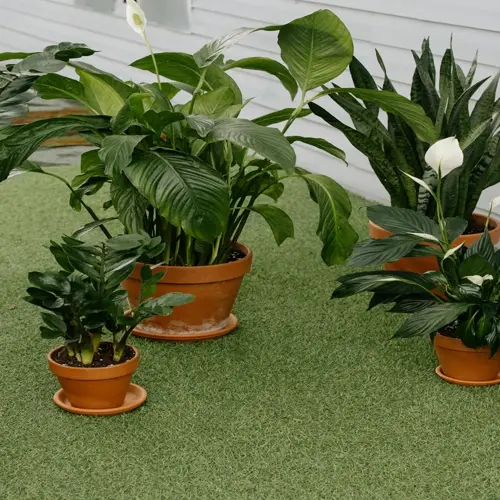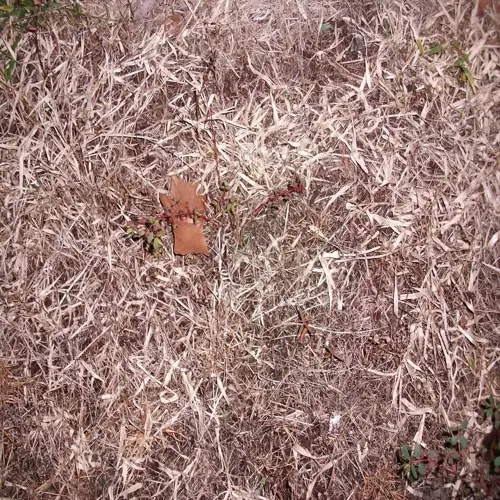Beneficial Nematodes Garden Pest Control

Written by
Michael Sullivan
Reviewed by
Prof. Charles Hartman, Ph.D.Target pests potently and safely: Garden applications of beneficial nematodes eliminate larvae while using no chemicals.
Apply at dawn/dusk: Applying nematodes at dawn or dusk protects them from damaging UV sunlight.
Build soil moisture: Moisture in the soil is critical for nematodes to survive or move toward a potential pest host.
Partner nematodes with organic practices: Nematodes will work seamlessly with compost tea or biological controls.
Reapply monthly: Nematodes have limited longevity, so during peak seasons you must reapply them monthly.
Accessible to beginners: Nematodes are simple to mix with water and therefore an accessible option to address garden pests immediately.
Article Navigation
Beneficial nematodes for garden pest control utilize microscopic worms that manage pests naturally without the use of chemicals. Beneficial nematodes are small organisms that already inhabit the soil and prey on harmful pests. Beneficial nematodes are safe for your plants, pets, and family while effectively eliminating more than 200 varieties of garden pests.
This method provides a more environmentally friendly alternative to conventional pesticides. I have been using them for my organic garden for several years. They complement composting systems and pollinator habitats nicely. You protect your vegetable crops without harming earthworms or beneficial insects such as ladybugs. It's a nice ecosystem.
In this article, I'll explain which kinds of nematodes control which kinds of pests. You'll learn the best application methods for maximum impact. I'll clarify some common myths around safety and longevity. This will help you build a successful, chemical-free garden!
Benefits of Using Beneficial Nematodes
Chemical-free safety means beneficial nematodes are safe for gardens with children or pets. They do not leave a toxic residue like synthetic pesticides. I have observed birds return to my yard after using nematodes. Your soil is clean for growing edibles, eliminating the risk of contamination.
These biological controls are cost-effective in the long run. One application typically equals multiple chemical applications each season. I realized I was saving over $50 a year with my veggie patches. They are reproducing among the pest larvae for ongoing, permanent control, without the need for any additional purchases.
Soil health improves with the contribution of nematodes. They enhance the microbial diversity while managing pest populations. After just two growing seasons, the earthworm population in my garden doubled. This maintains a natural balance of soil life, reducing compaction and increasing water retention, which creates a healthier plant.
The assurance of OMRI certification is compliance with standards for organic gardening. Their OMRI approval means it is safe for certified organic farms and home gardens. I recommend looking for this quality biological control seal on the product label.
Soil Health Improvement
- Microbial diversity: Nematodes enhance beneficial bacteria populations
- Nutrient cycling: Accelerate decomposition of organic matter into plant-available nutrients
- Soil structure: Movement creates micro-channels improving aeration and water infiltration
Ecosystem Protection
- Pollinator safety: Zero impact on bees and butterflies during flower visits
- Water conservation: No chemical runoff protects aquatic ecosystems
- Wildlife preservation: Safe for birds and mammals interacting with treated soil
Pest Resistance Prevention
- Natural control: Symbiotic bacteria prevent immunity development in pests
- Sustainable solution: Continuous effectiveness without resistance concerns
- Long-term reliability: Consistent performance across multiple seasons
Cost Efficiency
- Reduced reapplications: Lasts 4-6 weeks versus weekly chemical treatments
- Lower input costs: Eliminates need for protective equipment during application
- Garden productivity: Healthier plants yield more harvests over time
Ease of Integration
- Simple application: Mix with water and apply like regular irrigation
- Compatibility: Works with organic fertilizers and biological controls
- Beginner-friendly: No specialized equipment or training required
Target Pests for Beneficial Nematodes
Among the various pests for which beneficial nematodes are used, fungus gnats rank at the top of the list. The larvae of fungus gnats are root feeders in wet garden soil. It is easy to identify them as the seedlings wilt and growth is stunted. Apply Steinernema feltiae in the morning on a soil temperature above 55°F for best success.
*Vine weevils* cause serious damage to ornamentals like rhododendrons by creating distinctive leaf notching. Their white, C-shaped larvae feed on the roots of plants underground. Use *Heterorhabditis bacteriophora* in April-May or August-September. Water the soil for ten days after application to achieve the best results.
Japanese beetles in their grub stage leave large dead areas on lawns, and as adults, they skeletonize roses. Use Heterorhabditis bacteriophora, from July through September. Apply Jewish nematodes after rain when soil temperatures range from 60°F to 90°F, targeting young grubs, specifically first instars, that feed near the soil surface for rapid control.
For slugs that are creating irregular holes in hostas, utilize Phasmarhabditis hermaphrodita when it is raining. These nematodes infect slugs by entering through the mantle of the respiratory system. Apply the nematodes when the soil temperature is between 50°F and 70°F. The nematodes will significantly reduce damage from slugs but will not kill beneficial snails.
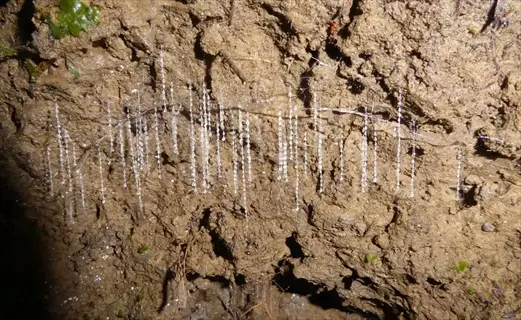
Fungus Gnats
- Larvae feed on plant roots in moist soil environments, causing wilting symptoms and stunted growth in seedlings and houseplants
- Steinernema feltiae nematodes enter larvae through natural body openings, releasing symbiotic bacteria that kill pests within 48 hours
- Apply during early morning or evening hours when soil temperatures consistently exceed 55°F (13°C) to prevent UV damage
- Heavy infestations require biweekly reapplications combined with yellow sticky traps for comprehensive adult flying insect control
- For potted plant treatment, thoroughly mix 5 million nematodes per gallon of water and drench soil until saturated
- Prevention strategies include allowing soil surfaces to dry between watering sessions and using sterile commercial potting mixes
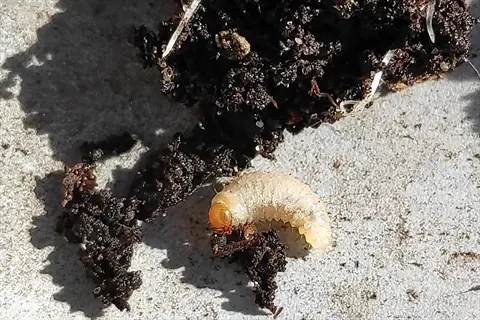
Vine Weevils
- Distinctive C-shaped white larvae extensively devour plant root systems while nocturnal adults notch leaves of ornamentals like rhododendrons
- Heterorhabditis bacteriophora nematodes specifically target larvae, turning infected specimens red-brown upon successful parasitization within days
- Optimal application periods occur during April-May for overwintered larvae or August-September for new seasonal generations
- Maintain consistently moist soil conditions for a full 10 days post-application at 60-80°F (16-27°C) to ensure maximum nematode effectiveness
- Drench soil thoroughly around affected plants using approximately 6 million nematodes per 200 square feet area coverage
- Complementary control methods include placing cardboard traps for nocturnal adults and inspecting root systems before planting
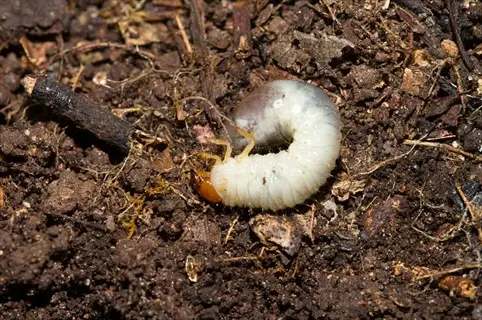
Japanese Beetles
- Grubs chew through grassroots creating irregular dead patches in lawns while adults skeletonize rose leaves and ripening fruits
- Heterorhabditis bacteriophora applications during July-September specifically target young grubs in their topsoil feeding stages
- Apply immediately after rainfall or irrigation when soil temperatures reach optimal 60-90°F (16-32°C) ranges for activity
- Use precise measurements of 10 million nematodes per 300 square feet area, watering lightly before and after application
- Nematode treatments can reduce grub populations by approximately 75% within 3 weeks when timed to early larval instars
- Supporting cultural practices include maintaining healthy turf density through proper fertilization and irrigation techniques
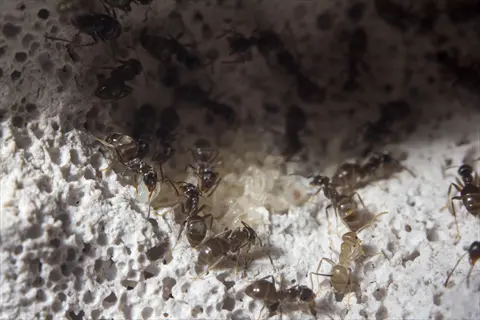
Ant Colonies
- Underground colonies disturb delicate plant root structures while farming aphids for honeydew secretions on vegetable plants
- Steinernema feltiae effectively disrupts ant brood development cycles, forcing colonies to relocate within 5-7 days post-treatment
- Apply nematode solutions directly to nest entrances during dawn or dusk hours when soil reaches 55°F (13°C)
- Thoroughly mix 5 million nematodes per gallon of water and drench nest entrances; repeat weekly for persistent infestations
- Avoid disturbing nests before treatment as nematodes follow chemical pheromone trails to locate hidden brood chambers
- Combine applications with diatomaceous earth barrier methods for comprehensive ant management without harming pollinators
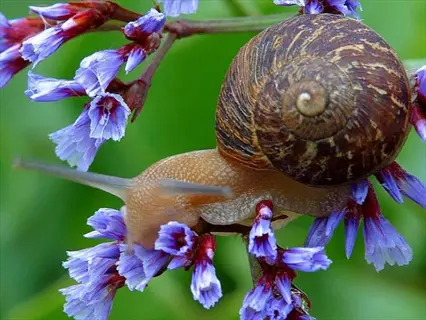
Slugs
- Slugs create irregular holes in leaves and stems of hostas and lettuces, particularly during damp nighttime conditions
- Phasmarhabditis hermaphrodita nematodes infect slugs through the respiratory mantle, causing feeding cessation within 3 days
- Apply during rainy periods when soil temperatures remain between 50-70°F (10-21°C) for optimal nematode mobility
- Use approximately 7 million nematodes per 200 square feet, concentrating around susceptible plants and daytime hiding spots
- These nematode species specifically spare beneficial snail varieties while significantly reducing slug damage in gardens
- Cultural controls include removing daytime shelters like boards and using copper tape barriers around vulnerable seedlings
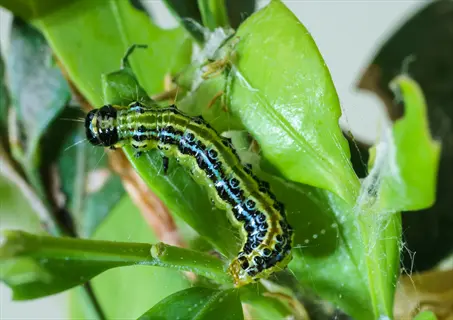
Box Tree Moths
- Green caterpillars rapidly defoliate boxwoods while creating protective webbing structures during feeding on leaves and bark
- Steinernema carpocapsae applications combined with wetting agents penetrate webbing to reach hidden caterpillar stages
- Time applications precisely to 10 days after adult moth sightings when larvae are newly hatched and vulnerable
- Thoroughly mix 6 million nematodes per gallon of water along with a commercial spreader sticker for improved adhesion
- Maximum effectiveness occurs between 60-85°F (16-29°C); avoid spraying during direct sunlight to prevent drying
- Combine treatments with pheromone monitoring traps to track adult activity patterns and infestation levels
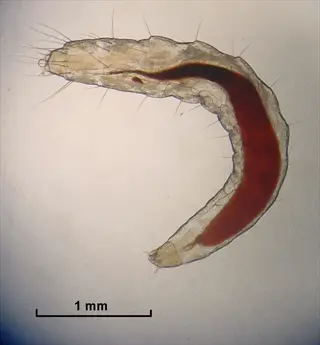
Flea Larvae
- Larvae develop in pet resting areas and carpets, feeding on organic debris before emerging as biting adult fleas
- Steinernema carpocapsae nematode applications effectively infect flea larvae in lawns and indoor areas, disrupting their entire life cycle within 72 hours
- Treat shaded outdoor areas during humid conditions when soil temperatures consistently exceed 55°F (13°C)
- Apply 9 million nematodes per 250 square feet; maintain treated area moisture for at least 3 days post-application
- Monthly reapplications during peak flea seasons provide continuous protection against developing larval populations
- Complementary measures include thorough vacuuming before treatments to remove eggs and regular pet grooming
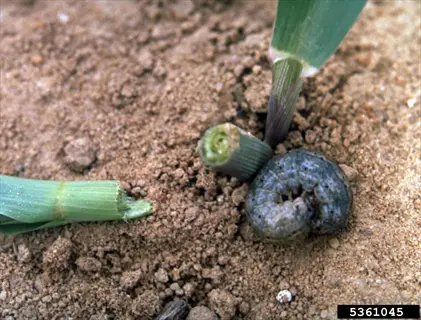
Cutworms
- Nocturnal larvae sever young vegetable plants at soil level, causing particularly devastating losses to seedlings
- Steinernema carpocapsae nematodes ambush cutworms near soil surfaces during their nightly feeding activities
- Apply at transplanting time when soil temperatures reach optimal 55-90°F (13-32°C) ranges for activity
- Drench the soil thoroughly around plant bases using a solution of 5 million nematodes per gallon; reapply after heavy rainfall events
- Physical collars around seedlings increase effectiveness by concentrating nematodes near vulnerable plant stems
- Preventative practices include removing plant debris before planting and tilling soil to expose overwintering larvae
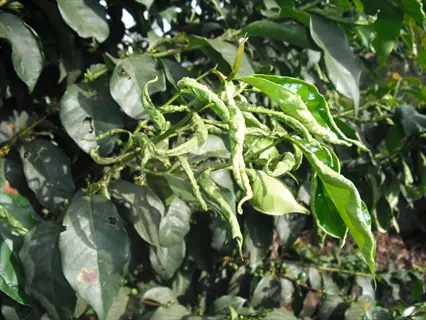
Thrips
- Tiny insects scar flowers and fruits while spreading plant viruses; larvae feed on protected leaf undersides
- Steinernema feltiae specifically targets soil-dwelling pupal stages, reducing emerging adults by interrupting development
- Apply nematode solutions every 2 weeks during active growing seasons when soil temperatures exceed 60°F (16°C)
- Apply a solution containing 8 million nematodes per 300 square feet for greenhouse bench systems or outdoor ornamental flower beds
- Combination approaches include introducing predatory mites for foliage stages and using blue sticky traps
- Cultural management involves removing weed host plants and avoiding excess nitrogen fertilization
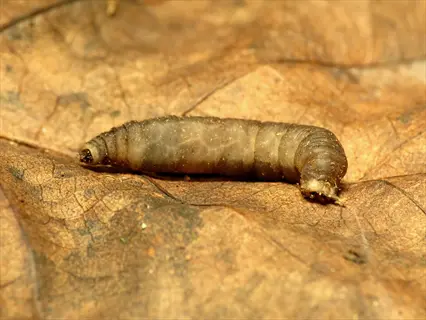
Crane Flies
- Leatherjacket larvae extensively devour grassroots causing distinctive yellow patches that detach like carpet sections
- Steinernema carpocapsae applications during September and October specifically target surface-feeding leatherjacket larval populations in lawns
- Apply after lawn aeration when soil temperatures remain between 50-70°F (10-21°C) with consistent moisture
- Disperse 10 million nematodes per 300 square feet using spray equipment; irrigate lightly for soil penetration
- Nematode treatments can reduce leatherjacket densities by approximately 80% within 4 weeks in properly managed lawns
- Supporting lawn care includes improving drainage systems and overseeding damaged areas with resilient turfgrass
Optimal Application Timing and Conditions
Using nematodes should be based on the life cycle of the pest. For spring pests (e.g., vine weevils), nematodes should be applied in the April-May timeframe when the larvae begin to emerge in the root zone. Summer applications are recommended for Japanese beetles (best in July-August). Fall applications are used on crane fly larvae (ex., lawn pests) in September-October, before the larvae enter winter dormancy.
Soil temperature controls nematode efficacy. Indoors, for fungus gnats, maintain a 55-85°F (13-29°C) temperature year-round. For outdoors, wait until the soil temperature is at least 55°F (13°C). To check soil temperatures, use a soil thermometer and take readings at least 3 inches below the surface before applying nematodes.
Managing moisture correctly is a must. Soil must be irrigated thoroughly so that the top 2 inches are damp like a wrung-out sponge. For 14 days after application, keep the area consistently moist. Sandy soils require light watering twice a day, while clay soils require careful observation.
To avoid UV injury, only apply at dawn or dusk. Once, I lost an entire batch when I applied at noon. Cloudy days don't matter. If you suspect rain is coming, use it six hours before the rain for soil entry.
Moisture Management
- Pre-watering: Saturate soil to 2-inch depth 1 hour before application
- Post-application: Maintain damp soil for 14 days without waterlogging
- Sandy soil: Water twice daily with light applications
- Clay soil: Monitor saturation to prevent pooling
- Signs of dryness: Soil pulling away from container edges
Temperature Control
- Minimum threshold: 12°C (54°F) for all species
- Ideal range: 16-29°C (60-85°F) for optimal mobility
- High-heat protocol: Apply only during early morning hours
- Cold mitigation: Use black plastic to pre-warm soil
- Thermometer placement: Insert 3 inches deep in shade
Timing Strategies
- Seasonal starts: Begin treatments 2 weeks after pest emergence
- UV-sensitive hours: 5-8 AM or 6-9 PM local time
- Cloudy days: Full-day application window possible
- Rain forecast: Apply 6 hours before precipitation
- Reapplication: Every 4-6 weeks during active infestations
Measurement Standards
- Nematode concentration: 5-10 million per gallon depending on pest
- Coverage density: 200-300 sq ft per gallon mixture
- Solution temperature: Match to soil temp ±5°F (±3°C)
- Storage duration: Maximum 2 hours after mixing
- Equipment calibration: Test sprayer output before full application
Avoidance Protocols
- Chemical interactions: Wait 14 days after pesticide use
- Fertilizer delay: Separate application by 48 hours
- Sunlight exposure: Never apply between 9 AM - 4 PM
- Wind conditions: Avoid speeds >10 mph (16 km/h)
- Equipment hazards: Rinse sprayers thoroughly post-use
Step-by-Step Application Guide
First, prepare. Inspect nematode packaging stored at 38-46°F (3-8°C). Before application, pre-moisten the soil until the top two inches feel moist, like a sponge. Gather equipment such as watering cans for small areas, backpack sprayers for lawns larger than 500 square feet.
For mixing, use room temperature water between 65-75 °F (18-24 °C). In a bucket, add five million nematodes per gallon. Mix with a wooden stick, gently or slowly, for five minutes. Let the solution sit (settle) for ten minutes before pouring it into the application tools.
Only apply when it is dawn or dusk to avoid UV damage. Use a watering can for precise spot treatment at one gallon for every 200 square feet. A sprayer will treat a larger area more quickly, at one gallon for every 300 square feet. Apply the product within twenty minutes of mixing.
Post-application, water lightly to allow nematodes to disperse into the soil. Keep soil moist for fourteen days and check daily for drying. Unused nematodes can be stored in the refrigerator, and any mixed solution should be discarded after 2 hours. Pest reduction can be observed within 3 days.
Preparation Phase
- Refrigeration check: Verify nematode package has been stored at 38-46°F (3-8°C)
- Equipment setup: Clean watering can/sprayer with pH-neutral soap and rinse thoroughly
- Weather assessment: Confirm overcast conditions or plan dawn/dusk application
- Soil pre-moistening: Water treatment area until top 2 inches are uniformly damp
- Solution temperature: Bring water to room temperature 65-75°F (18-24°C)
Mixing Process
- Container selection: Use 1-5 gallon bucket depending on treatment area size
- Water addition: Pour room-temperature water first, then sprinkle nematode powder
- Stirring technique: Mix gently for 5 minutes using wooden stick (avoid metal tools)
- Settling period: Let solution rest 10 minutes before application
- Concentration ratio: 5 million nematodes per gallon for most pests (see package specifics)
Application Execution
- Tool selection: Watering cans for small areas (<500 sq ft), sprayers for large zones
- Coverage density: Apply 1 gallon per 200-300 sq ft using sweeping motions
- Target zones: Focus on pest hotspots (e.g., base of plants for vine weevils)
- UV protection: Complete within 20 minutes of mixing during daylight hours
- Reapplication: Repeat immediately if solution spills or uneven coverage occurs
Post-Application Care
- Light irrigation: Water treated area gently to wash nematodes into topsoil
- Moisture maintenance: Keep soil damp (not soggy) for 14 days with daily checks
- Activity monitoring: Inspect for dead pest larvae after 3-7 days
- Equipment cleaning: Rinse tools immediately with clean water to prevent clogging
- Storage: Refrigerate unused nematodes; discard mixed solution after 2 hours
Troubleshooting
- Poor results: Verify soil temperatures >55°F (13°C) and reapply if needed
- Clogged sprayers: Strain solution through cheesecloth before loading
- Waterlogging: Aerate soil with garden fork if puddling occurs
- UV exposure: Apply additional 0.5 gallon/200 sq ft if applied in sunlight
- Pest persistence: Re-treat after 4 weeks if larvae remain active
Compatibility With Garden Practices
Organic fertilizers such as compost tea can be mixed with nematodes. They can be used simultaneously or within 24 hours of each other. Fish emulsion only requires one day in between. Seaweed extract does not require waiting. Bone meal should be incorporated into the soil 48 hours before nematodes for the best results.
Chemical pesticides require rigorous waiting periods. Synthetic insecticides require a 14-day waiting period before and after a nematode application, while copper fungicides require a month. Herbicides like glyphosate require 7 days. Always thoroughly flush the soil before applying nematodes after applying chemicals.
Biological controls differ in compatibility. Ladybugs and praying mantis are compatible with nematodes. Introduce beneficial mites 72 hours after nematode application. Bacillus thuringiensis (Bt) is compatible, but wait a week to introduce Trichoderma fungi to allow for optimal soil colonization.
Apply practices for garden types: Vegetable beds can accept drip irrigation at the same time. Lawn sprinklers should be used 6 hours after application of water. Potted plants have tap water pH levels over 7.5 which should be checked. Always pre-soak peat moss to help prevent nematodes from drying out.
Organic Fertilizers
- Compost tea: Apply simultaneously or immediately after nematode application
- Fish emulsion: Wait 24 hours before or after nematode treatment
- Seaweed extract: Fully compatible with no waiting period
- Bone meal: Incorporate into soil 48 hours before nematode application
- Application tip: Water in fertilizers before nematodes to prevent pH shifts
Biological Controls
- Ladybugs: Safe for simultaneous release; nematodes don't affect adults
- Praying mantis: No interaction; apply nematodes anytime
- Beneficial mites: Wait 72 hours before introducing mite predators
- Bacillus thuringiensis (Bt): Apply together for enhanced caterpillar control
- Trichoderma fungi: Separate applications by 1 week for optimal colonization
Chemical Pesticides
- Synthetic insecticides: Require 14-day waiting period before nematodes
- Copper fungicides: Avoid for 30 days; copper residues kill nematodes
- Sulfur sprays: Wait 10 days before applying nematodes
- Herbicides: Separate by 7 days; glyphosate reduces nematode efficacy
- Mitigation: Flush soil thoroughly before nematode application
Water Management
- Drip irrigation: Safe to run immediately after nematode application
- Sprinkler systems: Schedule 6 hours after nematode treatment
- Rainwater harvesting: Ideal pH for nematode stability
- Hard water: Neutralize with vinegar if pH >7.5 before mixing
- Water-saving tip: Apply nematodes before predicted rainfall events
Soil Amendments
- Biochar: Incorporate 2 weeks before nematode application
- Lime: Adjust pH 6.5-7.0 at least 14 days prior
- Gypsum: Apply simultaneously for improved soil penetration
- Vermiculite: Mix into planting holes before nematode drench
- Peat moss: Pre-moisten to prevent nematode desiccation
5 Common Myths
Beneficial nematodes inflict damage on plant roots like harmful pest nematodes and result in stunted growth and loss of crop yield.
Beneficial nematodes only reproduce in insect pests and act via symbiotic bacteria- they do not harm plant roots. Beneficial nematodes do not directly harm plants, unlike root-knot nematodes. Steinernema feltiae are nematodes that enter pest larvae through natural openings and release bacteria designed to prey on only the insect pest. Because of the biological precision, they are safe for all plants including vegetables and ornamentals. Always check nematode species before applying them in case they are the pest nematode you want to avoid.
Nematodes are able to live in human or pet bodies, creating possibilities for unhealthy consequences to the family and pets that are in or around treated gardens.
The nematodes that are used for beneficial pest control will die very quickly in mammals simply because their bodies are over 90°F (32C), which is too warm for these cold-blooded animals. It has been verified through scientific testing that beneficial nematodes cannot multiply in warm-blooded host(s), and will disintegrate within a few hours when ingested. For the safety of pets, it is recommended to treat gardens during the coolest times of the day and only when pets are safely in an indoor area. However, the chances of any issues with beneficial nematodes even if in direct contact are nearly zero. In summary, this temperature sensitivity also ensures that they are extremely safe for use as a pest control agent.
A single application of nematodes successfully prevents future treatments or management because it is permanent "pest control".
477 nematodes last only 4-6 weeks because they must find live host insects to reproduce. Soil conditions (i.e., temperature changes) shorten how long they last in soil. The majority of nematodes attack specific life stages of a pest, and if new generations are created, they will need to be reapplied. For ongoing control, monitor for pest activity, and when pest activity is high, retreat every month. Cultural practices (i.e. crop rotation) can be used with nematodes to prolong their effectiveness without causing dependence.
Nematodes can manage all pests in the garden, even pest insects that fly, such as adult mosquitoes or butterflies, and above-ground beetles.
For example, beneficial nematodes are used solely for soil dwelling pests that are larvae or pupal stage pests in soil, like fungus gnat larvae or grubs of Japanese beetles, to control them. Beneficial nematodes can't affect flying insects or surface-dwelling adult pests, or any pest that lives outside soil ecosystems because nematodes hunt and live under the soil surface. For comprehensive control of all pests in the garden, nematodes can be combined with above surface solutions such as Bacillus thuringiensis for caterpillars and row covers for beetles to effectively work with all life cycle stages of pests.
Utilizing nematodes involves specialized equipment and advanced gardening skills, which deters beginners from applying nematodes that reason.
Using nematodes just involves mixing them with water and applying them using a normal watering can or sprayer, without requiring expertise in horticulture. A user can successfully apply nematodes by following these three steps: 1) Pre-soaking the soil, 2) Mixing nematodes in room temperature water, and if desired, a surfactant, 3) Watering in at dawn or dusk. Starter kits will generally come with nematodes measured out in pre-measured packets, along with instructions for application. Many nematode suppliers will also have available tutorial videos for beginners to follow. For the best success beginning with nematodes, it is strongly advised to start with smaller more manageable areas, such as a potted plant or two, just to get comfortable and observe the process.
Conclusion
Picture your garden flourishing with vigorous plants free of pests. Beneficial nematodes are the key to making this dream a reality. Apply them now on your next cool morning. Your vegetables will become more robust, all without the ozone-depleting chemical residue that harms pollinators or soil life.
Enjoy peace of mind with genuinely safe pest control. I have seen my children harvest homegrown tomatoes straight from the vines after they were treated with nematode injections. Your pets are free to pray while these natural defenders work underground. This is a sustainable solution that will keep ecosystems protected for the long term.
Your garden becomes a balanced habitat where plants and beneficial insects thrive in unison. Earthworms naturally improve soil structure through their reproductive activities. Birds return as pollinators of hiking pests, providing self-regulating cycles. This approach fosters resilience against future pest occurrences.
Make this the season you take your first step toward chemical-free gardening, order nematodes according to your target pests. Tomorrow at dawn, follow the steps below and apply them. Envision your flourishing garden with healthier plants and increased biodiversity!
External Sources
Frequently Asked Questions
Are beneficial nematodes safe for vegetable gardens?
Absolutely. Beneficial nematodes specifically target pest larvae without harming plants or edibles. They're OMRI-listed for organic gardening and safe for consumption even when applied on harvest day.
Do beneficial nematodes harm earthworms?
No, earthworms are completely unaffected. Nematodes only infect insect pests through natural body openings. Earthworms lack these vulnerabilities and actually benefit from reduced pesticide use in nematode-treated soil.
Can I use tap water when mixing nematodes?
Use these water guidelines:
- Filtered or rainwater is ideal for neutral pH
- If using tap water, let it sit overnight to evaporate chlorine
- Hard water requires pH testing and vinegar adjustment below 7.5
Is overapplication of nematodes possible?
While not toxic, excess application wastes resources. Follow these best practices:
- Apply 5-10 million nematodes per gallon based on pest severity
- Cover only affected areas rather than entire gardens
- Reapply monthly during active infestations instead of doubling initial dose
What's the main drawback of using nematodes?
Their limited longevity requires proper timing. Nematodes remain effective for just 4-6 weeks and need specific conditions: consistent soil moisture, temperatures above 55°F (13°C), and application during dawn/dusk to avoid UV damage.
Can I apply nematodes with fertilizer?
Follow these compatibility guidelines:
- Organic fertilizers: Apply together or within 24 hours
- Chemical fertilizers: Wait 5 days before/after application
- Always water in fertilizers first to prevent pH shock
Do nematodes control above-ground pests?
No, they exclusively target soil-dwelling larvae. For comprehensive control:
- Use nematodes for root-feeding pests like grubs
- Combine with Bt or spinosad for leaf-eating caterpillars
- Employ row covers for flying insects
How do I store unused nematodes?
Proper refrigeration maintains viability:
- Keep unopened packages at 38-46°F (3-8°C)
- Never freeze or expose to direct sunlight
- Use within 4 weeks of purchase for maximum effectiveness
Can nematodes survive winter?
They die off in freezing temperatures but establish long-term control by:
- Eliminating larval stages before they overwinter
- Reducing future pest populations at the source
- Requiring annual applications in most climates
Are nematodes safe around pets?
Completely pet-safe. Mammalian body temperatures kill nematodes within hours. For peace of mind:
- Apply when pets are indoors
- Allow treated areas to dry before pet access
- No health risks even if ingested accidentally
